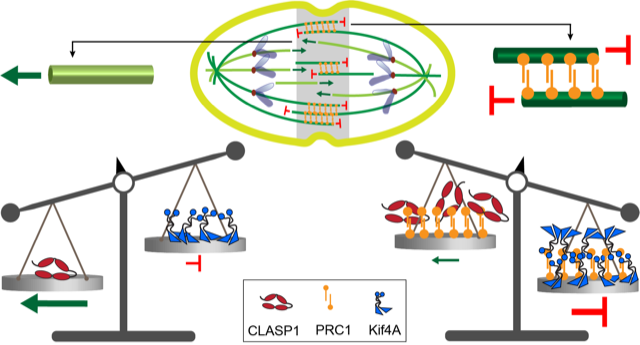A minimal in vitro system that mimics microtubule dynamics in the mitotic spindle
When a eukaryotic cell divides, cell cleavage occurs through its middle to form two identical daughter cells. Errors in this process result in cells with incorrect DNA content, a hallmark of tumorigenesis. How does a cell find its middle? Within a dividing cell, microtubules assemble into a platform of precise width, known as the spindle midzone, to mark the cell center. In a study published in Nature Chemical Biology, the Subramanian lab investigates how the midzone microtubule network is organized by mitotic proteins. They reconstitute a system composed of critical regulators of the spindle midzone organization and visualize the emergent properties of the microtubule network. The authors find that this minimal protein module recapitulates a key aspect of microtubule organization at the cell center, which is the presence of both stable and dynamic microtubule arrays in close proximity. The study uncovers design principles underlying the organization of complex microtubule networks, and provides fundamental insights into the processes of cell division.
